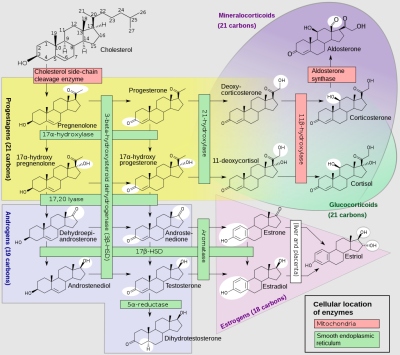(added cites for local conversion) |
No edit summary |
||
| Line 1: | Line 1: | ||
[[category:medical]] | |||
The main feminizing effects of estrogen depend on sex-hormone receptors being present in cells and hormone molecules being free to bind to them to affect gene expression. Since sex-hormones also regulate receptor expression<ref>https://www.ncbi.nlm.nih.gov/pmc/articles/PMC9934771/</ref>, increasing the amount of receptors or hormone available for binding is thus a desirable goal for feminizing HRT.<ref>https://springerplus.springeropen.com/articles/10.1186/2193-1801-2-214</ref> | The main feminizing effects of estrogen depend on sex-hormone receptors being present in cells and hormone molecules being free to bind to them to affect gene expression. Since sex-hormones also regulate receptor expression<ref>https://www.ncbi.nlm.nih.gov/pmc/articles/PMC9934771/</ref>, increasing the amount of receptors or hormone available for binding is thus a desirable goal for feminizing HRT.<ref>https://springerplus.springeropen.com/articles/10.1186/2193-1801-2-214</ref> | ||
Latest revision as of 04:54, 18 March 2024
The main feminizing effects of estrogen depend on sex-hormone receptors being present in cells and hormone molecules being free to bind to them to affect gene expression. Since sex-hormones also regulate receptor expression[1], increasing the amount of receptors or hormone available for binding is thus a desirable goal for feminizing HRT.[2]
Estradiol has a pathway of being synthesized from testosterone in the body through an enzyme called aromatase which allows for certain levels of testosterone to circulate and still be converted to estrogen.[3]
This conversion of sex-hormones has an important effect on sites such as the breasts, fat, bones and brain which are affected by local synthesis of estradiol acting directly on the tissues[4].[5] [6]
- ↑ https://www.ncbi.nlm.nih.gov/pmc/articles/PMC9934771/
- ↑ https://springerplus.springeropen.com/articles/10.1186/2193-1801-2-214
- ↑ https://www.ncbi.nlm.nih.gov/books/NBK278933/
- ↑ https://www.ncbi.nlm.nih.gov/pmc/articles/PMC5519084/
- ↑ https://academic.oup.com/endo/article/142/11/4589/2988522?login=false
- ↑ https://www.ncbi.nlm.nih.gov/pmc/articles/PMC3286233/

